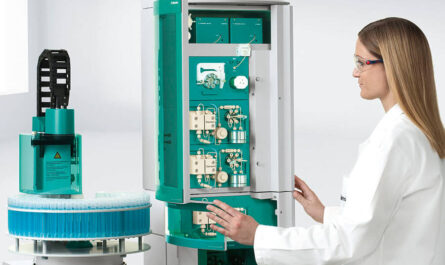
Introduction to Remote Patient Monitoring
Remote patient monitoring (RPM) devices allow healthcare providers to monitor patients and collect medical data outside of conventional clinical settings, such as in the patient’s home. These devices transmit information like vital signs, weight, blood pressure, blood sugar levels, and more to a secure online portal or mobile application where it can be viewed by providers. This enables ongoing care and management of chronic conditions without frequent office visits.
Types of RPM Devices
Vital Sign Monitors
Vital sign monitors measure patients’ basic physiological data like heart rate, respiratory rate, temperature, blood pressure, and oxygen saturation. These monitors are usually small portable devices that patients can use at home to track vitals. The data is wirelessly sent to their provider’s online portal. Monitors for specific vitals like blood pressure cuffs and pulse oximeters are also common RPM devices.
Glucose Monitors
For patients with diabetes, glucose monitors are essential RPM tools. Continuous glucose monitors (CGM) can track blood sugar levels around the clock via a small sensor inserted under the skin. Other options include regular fingerstick glucose meters that patients use to check levels and send readings to their provider. Early detection of high or low blood sugar through monitoring can help prevent diabetic complications.
Weight Scales
Bluetooth-enabled smart scales allow patients and providers to monitor weight trends over time. For those with heart failure, kidney disease or other conditions where weight changes can indicate worsening status, daily scales provide important health insights. Abnormal gains or losses detected through remote monitoring may prompt a change in diets or medications.
ECG/EKG Monitors
Remote ECG/EKG monitors can detect irregular heart rhythms or activity. Wearable patch monitors or portable recorders transmit EKG readings during symptoms or on a scheduled basis. This aids in diagnosing arrhythmias without needing an office visit. It’s also useful for monitoring response to treatment over time.
Other Specialty Devices
Additional types of specialty remote monitoring devices include asthma monitors that track lung function, sleep apnea monitors that record respiration and oxygen levels during sleep, and medication adherence sensors that detect when medications have been accessed.
Benefits of Remote Patient Monitoring
Increased Access to Care
RPM expands access to care, especially for patients in rural areas who live far from providers or have difficulties getting to appointments. Virtual care through remote monitoring helps fill gaps where in-person visits are challenging.
Earlier Detection of Issues
Frequent monitoring of key health data outside of the clinical setting catches any deviations or issues sooner than waiting for a scheduled office appointment. This early detection enables proactive management and treatment before problems worsen.
Improve Chronic Condition Management
For patients with diabetes, heart disease, COPD or other chronic illnesses, remote monitoring supports ongoing at-home care between visits. Seeing trends over time helps providers guide lifestyle modifications or medication adjustments needed to better control conditions. This leads to improved outcomes.
Reduced Healthcare Costs
Studies show remote patient monitoring programs achieve cost reductions by decreasing expensive emergency department visits and hospital readmissions related to uncontrolled or unmanaged chronic conditions. Fewer in-person visits also saves on overhead costs associated with in-office appointments.
Enhanced Convenience and Compliance
Patients find remote monitoring to be more convenient than traveling to appointments, waiting for opening, and taking time off from work. Making health monitoring part of daily routine improves compliance with tracking regimens. Providers also have access to more health data points compared to infrequent office visits alone.
Limitations and Challenges of Remote Monitoring
Despite clear benefits, some limitations also exist with remote patient monitoring programs:
– Upfront costs of purchasing and implementing RPM devices and software systems can be significant for healthcare organizations and providers.
– Reimbursement remains an issue, as payment mechanisms often lag behind new technologies. Providers may not recoup investments if reimbursement rates don’t adequately cover remote care delivery.
– Not all patients have access to or ability to use monitoring devices and digital health tools independently. Those in lower income or rural communities are disproportionately affected.
– Technical difficulties may occur like devices malfunctioning, connectivity issues transmitting data, or lack of patient computer literacy. Troubleshooting burdens providers and patients alike.
– Remote monitoring does not replace all in-person care needs. Physical exams are still necessary periodically. Additionally, some conditions require hands-on clinical evaluation that devices cannot provide alone.
– Privacy and security of digital health data transmitted outside secure clinical settings poses ongoing compliance and risk management challenges. Strict regulations aim to curb these but not eliminate all threats.
As technology and care delivery models advance rapidly, remote patient monitoring continues extending care and improving outcomes globally. With refinements to address limitations, it shows huge potential to shape the future of value-based healthcare. Its growth brings both opportunities and responsibilities to prioritize patient access, experience, and well-being above all else.


